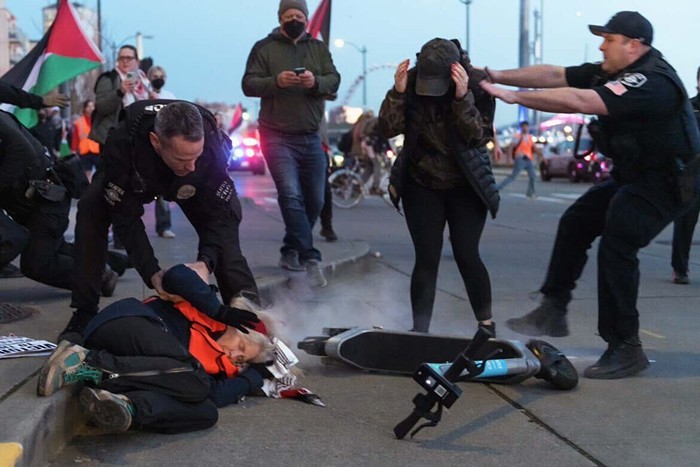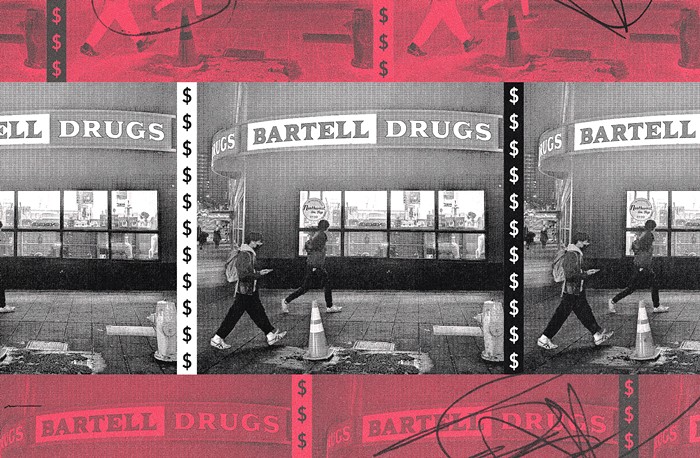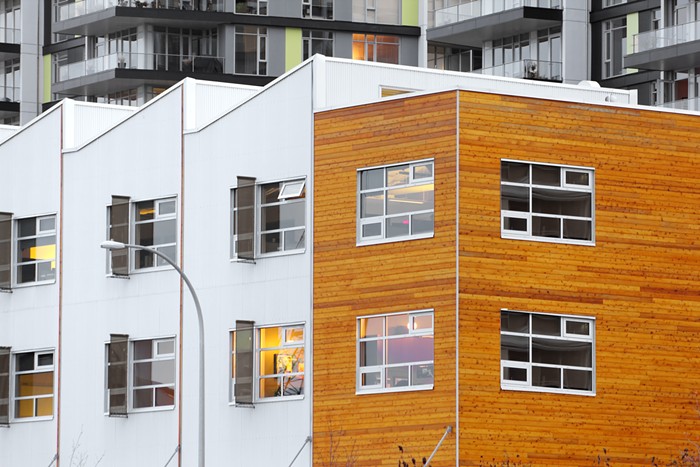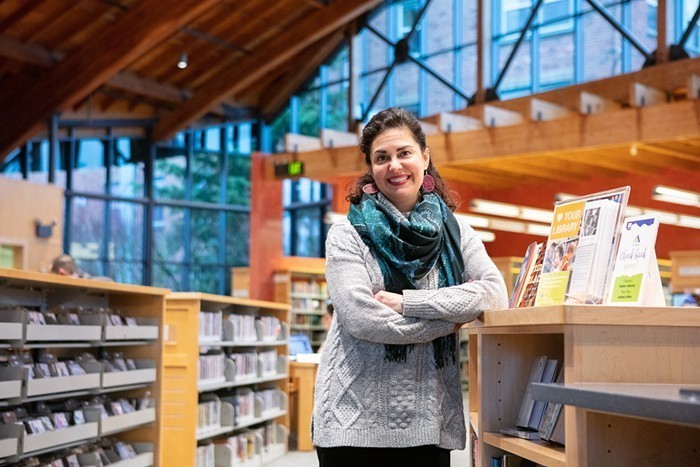Just before 12:01 a.m. on December 6, as King County executive Dow Constantine prepared to personally issue some of Washington State's first same-sex marriage licenses, he took a few moments to recall how long gay couples have been coming into the King County Recorder's Office and asking for them.
He mentioned Paul Barwick, now 66 years old and living in San Francisco. He also mentioned Faygele ben Miriam, who passed away 12 years ago. Those two men showed up at the county recorder's office in 1971 (ben Miriam in seersucker jacket and tie, Barwick in tight white T-shirt reading "GAY"), applied for a marriage license, and when their request was denied, they launched one of the first gay marriage lawsuits ever seen in the United States.
It went nowhere.
But it started something. Today, the man who denied Barwick and ben Miriam their license on orders from his superiors, Lloyd Hara, is the King County assessor and a strong backer of marriage equality. He recently walked his lesbian daughter down the aisle at a ceremony in Vermont. "How times have changed," Hara said earlier this year in a wonderful understatement.
Constantine, as he prepared to sign the newly legal licenses, also mentioned former King County executive Ron Sims.
In 2004, Sims invited a number of gay couples into the county recorder's office, denied them marriage licenses, and in doing so set up another legal fight for marriage equality, a case that came to be known as Andersen v. King County. That case went all the way up to the Washington State Supreme Court and, in 2006, in a landmark 5–4 decision, our high court justices found no constitutional right to gay marriage in Washington State. Their ruling upheld the so-called Defense of Marriage Act that our state legislature had passed in 1998, just as the gay marriage movement was beginning to gain national momentum. (This was one year after a strong majority of voters in this state—including a majority of voters here in King County—voted against a measure that would simply have protected gays and lesbians against discrimination in hiring.)
When that 2006 high court ruling came down, Sims attended a protest rally on the plaza in front of the King County Administration Building and yelled: "This decision will not stand the test of time. One day, we'll open these doors and people will find justice—the right to be married."
Sims was right.
"What we are doing today is living up to the founding ideals of this country," Constantine said.
He also mentioned Cal Anderson, Washington's first openly gay state legislator, a man who tried but was never able to get a gay civil rights bill passed in Olympia before he died of AIDS in 1995. Nearby, as Constantine talked about Anderson, was Senator Ed Murray (D-Seattle), who succeeded Anderson in the legislature and, nearly 30 years after the idea of a gay civil rights bill was first raised, finally got one passed in 2006. Next to Murray stood Representative Jamie Pedersen (D-Seattle). Together, Pedersen and Murray led a team that pushed domestic partnerships through the legislature over the next few years, and then in January and February pushed through a marriage equality bill. Also nearby: attorney Anne Levinson, who, when it was clear our new marriage equality law would be challenged at the polls this fall via Referendum 74, headed straight to court to get fair ballot language for the measure.
"This has been a battle that has been fought by people who are notable," Constantine said, "and people who labored in near anonymity."
He began handing out the licenses, legal now because after all the votes were counted, 54 percent of Washington State's voters—and 67 percent of voters here in King County—had approved R-74, effectively repealing the old Defense of Marriage Act. The first marriage license went to a lesbian couple from West Seattle, Jane Abbott Lighty and Pete-e Petersen, who have been together 35 years. Constantine signed it with a pen that had been used by Governor Chris Gregoire as she signed the marriage equality bill.
Their licenses in hand, Lighty and Petersen, followed by hundreds of other gay couples over the course of the night, then walked out of the county recorder's office and onto the plaza in front of the administration building, the same plaza where Sims had promised that "one day, we'll open these doors and people will find justice." Several people lifted their arms in victory as a large crowd cheered and waved signs. "I'm so fucking happy for you!" read one sign. "Thank you," read another. "This economy needs gay weddings."
Many of those same couples showed up on December 9 when Mayor Mike McGinn opened Seattle City Hall for use as a sort of giant nondenominational civil marriage chapel. All day long, gay and lesbian couples passed through the building's first-floor atrium, heading for one of several wedding spaces designed by local artists, speaking their vows in front of local judges who had volunteered their time, relaxing afterward in a reception room stocked with drinks and cupcakes donated by local businesses, and then descending the giant staircase that slopes out of City Hall toward Fourth Avenue, a staircase that was lined with onlookers offering flowers as each couple was announced. Among the newly married couples: Deborah Needham and Nancy Monahan of Renton, together 14 years, Needham in a white brocaded dress and Monahan in her crisp Coast Guard uniform.
All cheered, some wept. The protesters that city officials braced for never materialized, further underscoring the new reality that marriage equality is now a mainstream ideal. And toward the bottom of the staircase, a woman held up a sign that read: "Congrats, and sorry it took this long." ![]()




















